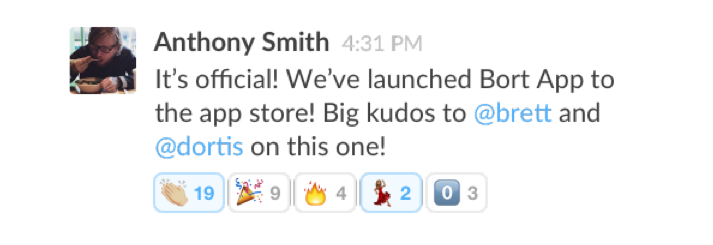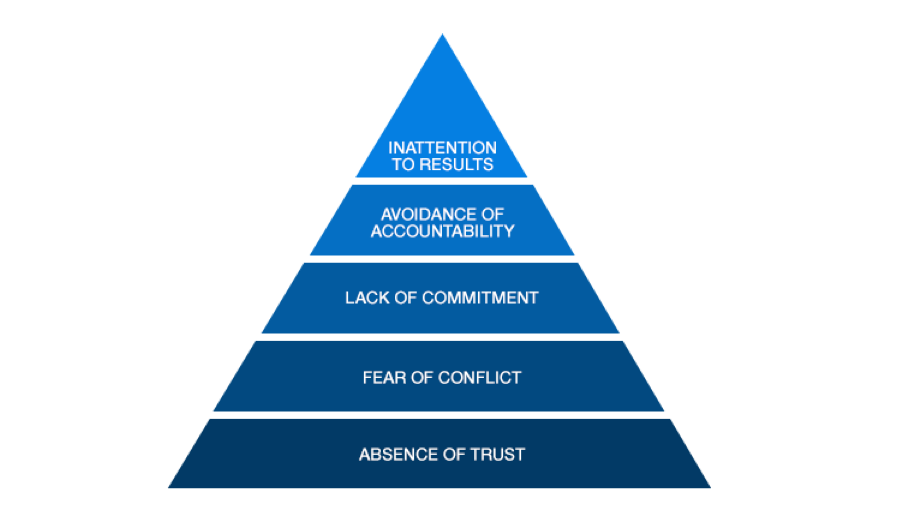Over time, teams develop bad habits that hurt productivity. They slowly stop adhering to processes. They let standards slide. They communicate less. What’s worse is that as these bad habits creep in slowly over time, you can forget that your team is even doing them. Productivity suffers and no one even notices.
The problem is only exacerbated for remote teams. It’s hard enough for any group of people to stick to a regimen of healthy team habits. But when individuals don’t see each other every day, and they’re not regularly checking in to make sure everyone is adhering to office-wide standards, the slow creep of bad habits is even more dangerous, and leads to poor productivity.
All too often, working remotely means working separately. That leaves you without regular times to check in, re-assess how the team is doing, and make the necessary changes to reach peak functionality.
If you want to get things done without getting a professional productivity expert I have some amazing tips for you.
Enter New Years. Here’s your chance to make adjustments and define the tone for the next 12 months. That’s why so many companies introduce a yearly theme when everyone comes back from the holidays.

In 2016, resolve to take on these fundamental problems that plague teams at work—especially remote teams. They’re what Patrick Lencioni calls the 5 Dysfunctions of a Team, and they lay out the main reasons teams aren’t as productive as they could be, why so many aren’t aware of them, and what they can do to fix them. Here’s how.
1. Stop Mistrusting Your Team
“The fear of being vulnerable with team members prevents the building of trust within the team.” — Patrick Lencioni
Lack of trust is dysfunction number one in Lencioni’s eyes. It prevents us from designating tasks to other people, because we’re so certain we can do a better job. But if you only trust your work, and not your team members’, you wind up with inefficient bottlenecks, resentment and eventually burnout. Ultimately, without trust, your team fails.
Scientific research shows that we’re all credit hogs—we tend to recall our own accomplishments more than anyone else’s. In a famous study from 1979 by psychologists Michael Ross and Fiore Sicoly, married couples completed questionnaires on the extent of each partner’s responsibility for twenty different activities, from childcare, cooking and cleaning, planning activities, making decisions, and causing arguments.
Nearly three out of four couples overestimated their contribution, and their combined percentages went over 100%.
Similar over-allocations have been demonstrated in fundraising and academics. In a more recent Harvard study in which MBA students estimated how much of the collective work they’d done in their study group, the sum of the students’ self-centered estimates was a whopping 139%.
In addition, when we do actually manage to remember what people have done, we tend to only remember the bad stuff. In psychologist Rick Hanson’s words, “The mind is like Velcro for negative experiences and Teflon for positive ones.” The way to turn Teflon into Velcro, he states, is to make good experiences stick by tracking them.
The problem of hogging credit is even worse for remote teams. You’re fully aware of the work you’re putting in—writing code and answering late-night emails, but when you don’t visually see everyone else at the office putting in the same amount of elbow grease, you’re even more likely to be a credit hog.
Record Everyone’s Accomplishments
Fortunately, there’s a way to circumvent this self-aggrandizement and combat our tendency to only remember the negative: tracking everyone’s accomplishments.
The best way to make good experiences “stick” is to write them down. This can take a lot of forms—from keeping a log of everyone’s accomplishments to sending thank-you notes when someone does a particularly good job. Not only will they appreciate it, you’ll be more likely to recall the event.
When you actually see others’ accomplishments and share gratitude, you force yourself to reflect on the contributions of others, not just your own, and that will help you realize that others are getting more done than you would’ve otherwise given them credit for. Say goodbye to credit hogging.
The kicker is that by expressing gratitude, you’ll be boosting the confidence of your teammates. That actually motivates people to work harder and creates a virtuous cycle in which gratitude drives harder work in your team, which reduces your bias toward credit hogging and makes you more likely to share gratitude.
Go-To App: I Done This
I Done This is a great way of logging everyone’s accomplishments. It shows you a history of your team’s productivity, as well as individuals, which helps teams contextualize everyone’s work.
When you’re sprinting to roll out a new product iteration, there are a lot of moving pieces. If you have to wait on one person’s piece, like that bug they said they would fix last Tuesday, your first instinct is probably to get upset. You did your part of the bargain—why couldn’t they do theirs?
Looking at their Dones helps you contextualize small assignments, which is especially important once you recognize how much work can snowball. Maybe they were trying to fix that bug last Tuesday but stumbled upon a bunch of other flaws in the code that needed to be sorted out first. It’s not that they weren’t doing their work, they just ended up doing different work that you weren’t even aware of.
I Done This also makes gratitude and praise all the easier—and if there’s a team member you really shouldn’t be trusting, you’ll know that it’s not just the negativity bias, as you have the data to back it up.
If you go with your gut on this, you’ll be wrong. You can’t evaluate what you don’t measure—especially because studies like the one out of Harvard show us that when you think you’re measuring something, you’re doing it wrong.
2. Learn to Love Conflict
“The desire to preserve artificial harmony stifles the occurrence of productive ideological conflict.” — Patrick Lencioni
We all want to avoid conflict. But this can be especially true for remote teams, where it’s particularly easy to preserve artificial harmony.
But as it turns out, conflict is a bit more nuanced than that, as one CPP study found. Lecioni agrees. As he says in 5 Dysfunctions of a Team, “The desire to preserve artificial harmony stifles the occurrence of productive ideological conflict.”
That’s right. Some conflict can lead to productivity. As the CPP study found,
- 76% of employees have seen a conflict lead to something positive
- 41% found that it led to a better understanding of other people
- 33% experienced improved working relationships
- 29% found that conflict led to a better solution to some problem or challenge
- 9% say that conflict resulted in the birth of a major innovation or new idea at work
Though researchers set out to categorize “good” and “bad” conflict, they had a hard time classifying what made an argument productive or unproductive. Of course, some are clearer than others. Racism and sexism? Gossip and interpersonal conflict? Yeah, those are generally unproductive workplace conflicts that just brew dislike. Same with workplace political disputes, as it turns out.
The good kind of conflict—the ones that lead to better understanding, major innovation, or improved relationships—are the ones that get resolved. That might mean really getting into it. Team members have to stick up for their side of the argument and be really passionate about it, even if it means going head-to-head with a coworker—something we try to avoid unless absolutely necessary.
Things have to get ugly before they get pretty.
But that doesn’t tend to happen for remote teams. In fact, an MIT study did extensive research on conflict in distributed teams, and after examining 44 different teams across the country, concluded that distributed teams tend to experience the “bad” kind of conflict.
They “reported more task and interpersonal conflict than did the collocated teams.” But most importantly, these conflicts went unresolved or weren’t resolved to everyone’s satisfaction.
When conflicts are kept to a minimum, instead of brought to the surface and hashed out until everyone has a solution, it just leads to bad blood. And as the MIT study found, if your team is distributed, you’re much more likely to experience this–and you’ll see lower productivity.
Formalize Informal Conversation
There’s a way to bridge the gap between bad conflict and good conflict: spontaneous conversation. As the MIT study concluded, “Finally, we found that spontaneous communication played a pivotal role in the relationship between distribution and conflict.”
In remote teams, there’s a tendency to talk only when it’s totally necessary, just because there are high organizational costs in planning a meeting. It’s hard to organize a Skype call between five people in three different time zones. But without spontaneous communication, remote teams often don’t really get to know each other.
Without the benefit of water cooler talk, or chatting over lunch, you don’t know that Jason has to sign off at 5 on Wednesdays because he’s picking his kids up from soccer practice, but makes up the extra hour on Thursday mornings.
And as it turns out, that kind of spontaneous conversation is more important than you might think, because it gives everyone on the team a shared sense of identity. It helps them to get to know each other, not just as coworkers, but as human beings.
So when there is resentment between team members, let’s say over the direction a project is going in, they’ll feel more comfortable bringing up issues with each other. The ability to empathize with people leads to more satisfactory conflict resolution. So if teams really know each other, that bad, unresolved conflict can easily turn into good, productive conflict.
Go-to App: Slack
While there’s a lot of hand-wringing over whether Slack will replace email, it definitely has one thing going for it: its casual tone. Basically, the benefit of Slack is that it lowers the stakes for communicating. Instead of having to compose a relatively formal email to everyone, you can keep it chatty.
You can also add personality and tone to your messages with emoji. While emojis used to be the domain of tweens texting and instant messaging, they finally have a place in the workforce. Etiquette expert Jacqueline Whitmore told Fast Company, emojis are totally appropriate in the workplace, so long as you use them in moderation.

You can also react with an emoji (or reactji, if you’re really into portmanteaus), allowing you to recognize (and praise!) people’s work with the touch of a button, taking very little time out of your day.
3. Make Following Through Super Easy
“The lack of clarity or buy-in prevents team members from making decisions they will stick to.” — Patrick Lencioni
Now to attack the third dysfunction: lack of follow through and commitment. Even the of best teams experience this one, Lecioni says, because following through on something is hard—especially if the stakes are low.
A Carnegie Mellon study revealed that our fear of commitment is due to the status quo bias. It’s one of the main principles of a field of study called “choice architecture,” or the science of why we make the choices we make. A Yale University study examined the same thing with making good 401k tax policies. We make better choices when they’re basically already made for us.
It’s the reason people advocate for making changes like making organ donorship opt-out instead of opt-in. We’re perfectly happy sailing along and having things go the way they are. We don’t like to step up to the plate unless there are a lot of rewards for doing so, or if it’s just really easy. When committing and following up seem like difficult options, we’d rather just not do them.
This is especially true for remote teams because when you don’t see people every day, it’s easy to let things slip through the cracks.
Let’s say you’ve been meaning to email Karen about her post-mortem of the old product roadmap, but it’s been at the bottom of your to-do list for a while since it’s not time-sensitive. You choose to email her later because you have more important stuff to focus on now.
If you were to bump into her at the office, it might leap to the front of your brain (and the top of your list). But when you don’t see people, you don’t get the visual reminder. The result? You just might forget to reach out until 9 pm the night before you’re supposed to turn in a revised product roadmap, and Karen signed off for the day. Looks like you’re on your own.
Automate Follow-Ups
Lecioni’s solution is to remove choice from the equation. Make following up a necessity. When following up on a commitment is a choice, our default is to opt out. But when it’s not a choice, we’ll do it.
This is especially a problem with emails. When you’re working with a remote team, email is one of the most important ways you communicate with everyone. No matter how much you use Slack, a lot of your Big Bad Projects are going to show up in your inbox. And in a team full of people, we have a tendency to diffuse responsibility.
That means if someone emails a bunch of people on your team, you might ignore it, hoping someone else will respond. Unfortunately, everyone cc’d on the email thread does the same. And it goes unanswered.
Go-to App: Followup.cc
Followup.cc is a great way to automate commitments. It’s a Chrome extension that automates a specific kind of following up: emails. It forwards your emails to you at a time you determine to ensure that you actually follow up on them. So when someone doesn’t answer your email, you don’t let it slip through the cracks. You see it through to the end.
It will prevent your team from using their inbox as a to-do list. They scroll down and see what needs to be done, and what things they need to respond to. But because your email is constantly growing, using it as a to-do list, without setting reminders, will almost ensure that you bury some really important stuff.
With Followup.cc, your team won’t be able to diffuse responsibility anymore, because you’ll have no choice but to follow through.
4. Use Checklists to Heighten Accountability
“The need to avoid interpersonal discomfort prevents team members from holding one another accountable.” — Patrick Lencioni
Holding someone accountable can be really tricky. But it’s something teams (especially remote teams) need to lean into, according to Lencioni. He argues that the reason we don’t hold team members accountable, generally, is because we’re afraid of creating an uncomfortable work situation.
As Atul Gawande writes in The Checklist Manifesto, even the act of writing up a checklist, or process, can raise people’s accountability.
A study from the Netherlands examined what happened when a hospital put Gawande’s tools in place. Every procedure the hospital completed had to be rigorously documented through a checklist, which showed who had done what.
Did they wash their hands? Did they wear surgical gloves? Did they make sure they were operating on the right leg? Checklists ensured that some very basic processes were getting done that had been overlooked. The numbers speak for themselves. The total number of complications per 100 patients decreased from 27.3 to 16.7—saving hospitals time and money.
Remote teams have an especially hard time with accountability since there’s no literal oversight on a day-to-day basis.
And a lot of solutions to this problem swing in the opposite direction. They care so little about creating discomfort that they make employees’ skin crawl. Some companies use apps like HiveDesk that give managers the ability to randomly sample your screen, but it can feel like Big Brother monitoring.
As it turns out, there’s a better way to do it.
Lower the Communication Stakes
“Interpersonal discomfort,” in Lencioni’s words, is easily fixed. All teams need to do is lower the stakes of “accountability communication.” If you need to ask someone about an assignment that they haven’t turned in or call someone out for getting a number wrong in a press release, the stakes of communication should be really low.
Oftentimes, we make holding people accountable a big deal. If you give team members total autonomy over their projects, it can be a huge snub to intervene. If someone has a huge chunk of time to do a report on your app’s retention stats, your instinct might be to not check up until the big deadline, when they have to present to an investor. That means when you do finally check in, the stakes are really high.
But if we lower the communication stakes—that is to say, create a culture where accountability is totally transparent all the time—then accountability won’t be such a big deal anymore. You can check in on their progress and not feel like you’re prying, or encroach on their autonomy.
If there’s a system in place that tracks accountability—without feeling Big Brother-y—no one has to feel like the bad guy.
Go-to App: Process Street
Process Street helps systematize processes, allowing you to see what everyone has done (or hasn’t). You can easily visualize how much of a process someone has completed, and collaborate on workflows.
Process Street really excels when it comes to creating checklists—like the ones that save lives in hospitals. Even if your work isn’t life or death, implementing checklists is hugely helpful when it comes to raising accountability, especially for a remote team. 
You can quickly glance at a process to see if everyone is adhering to it—like keeping on track with their OKRs—which means you won’t have to talk about accountability when the ship is sinking. You’ll be able to talk about it before you hit the iceberg.
5. Set Everyone’s Sights on Team-Wide Success
“The pursuit of individual goals and personal status erodes the focus on collective success.” — Patrick Lencioni
As much as we use the term “worker bee,” humans have a hard time being totally team-oriented. We think about team goals, sure, but sometimes we focus on our personal goals instead. And they can conflict. This poses a bigger problem than you might think. Yes, it impacts productivity, since we get in each other’s way.
But as it turns out, it impacts everyone’s general happiness. As a University of Iowa study found, when personal and team goals don’t line up, it negatively affects team members individual effort and satisfaction with their job. It also changes their interaction with their coworkers—they start to view them as competitors instead of team members. Resentment starts to brew.
This is the fifth and final dysfunction. When team members only pursue individual goals and personal status, Lecioni says, they incidentally erode the focus on collective success.
It’s especially a problem for remote teams, where each team member is working autonomously. If you’re not in an office full of people all day, it’s easy to fall into the trap of just focusing on your own goals.
Align Personal and Team Goals for Remote Teams
There’s no question that setting personal goals—especially productivity goals—is a great way to get ahead. Personal goals reduce the cognitive load on your brain and make room for creativity. They motivate you to take action. They also force you to find clarity in your work.
But if team members are solely focused on personal goals, they tend to do it at the risk of damaging team goals. Just like we’re more likely to remember our own accomplishments, we’re more likely to think about our own goals.
It’s not that you need to eliminate personal goals, it’s that they have to make sense with your team’s goals. Teams need to have both—and they need to line up. If your goal is to hit $2 million in ARR by the end of March, but your sales team is focusing on their individual sales goals, they might be missing some opportunities that they’d get if they worked together.
Team OKRs need to be perfectly lined up so that your entire company hits its key results. Big company-wide goals, like an ARR target, rely on a lot of smaller goals going right.
Go-To App: Workboard
One solution is the app Workboard. Workboard sets out to get everyone’s goals aligned. It helps teams set both short-range goals and objectives that inspire and motivate your team. Through powerful visualization, it brings your goals center stage to really help drive alignment and action.
You’ll be able to see if different teams are on track to meeting their key objectives. Is the sales team close to getting 500 leads? Is the customer success team keeping churn down to 2%? Looking at the little objectives gives you a clear sense of whether you’re on track to hit the big objectives.
Collective goals that are visible, and on everyone’s mind, help your team get real clarity on where they’re going—individually and team-wide. Once that is made really clear, everyone will know how to contribute to your team’s mission.
Resting on Your Laurels is Dangerous
There’s a much more dangerous problem when throwing old habits out: they creep back in. All that progress you’ve made is suddenly undone.
When implementing new tools for workplace productivity, teams need to remember that it’s an ongoing battle, and sometimes, you need to readjust goals. Readjusting goals prevents you from undoing the progress you’ve done.
So you’ve tackled one of the 5 dysfunctions—you can’t let it slip in favor of fixing another one. If you rest on your laurels and assume that it’s all okay, you might end up undoing some of your hard-earned progress.
Fixing the 5 dysfunctions is a journey. You can’t simply check off one of the dysfunctions as moot and hope for the best. As Lencioni states, you need to be vigilant that they stay out of your team’s dynamic—no matter how much work that takes.
Because unless you prevent dysfunctions from creeping back into your work life, you’ll be in exactly the same spot next January. If you want real results, stay on guard. Your team will thank you for it.
